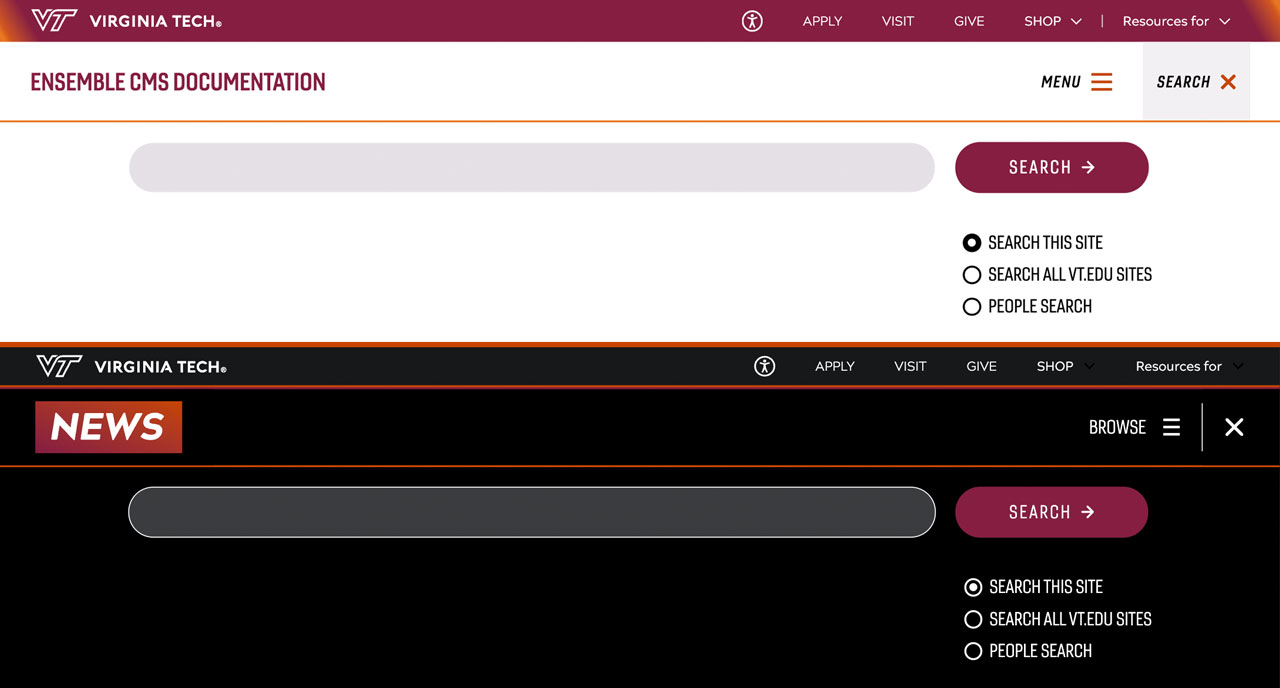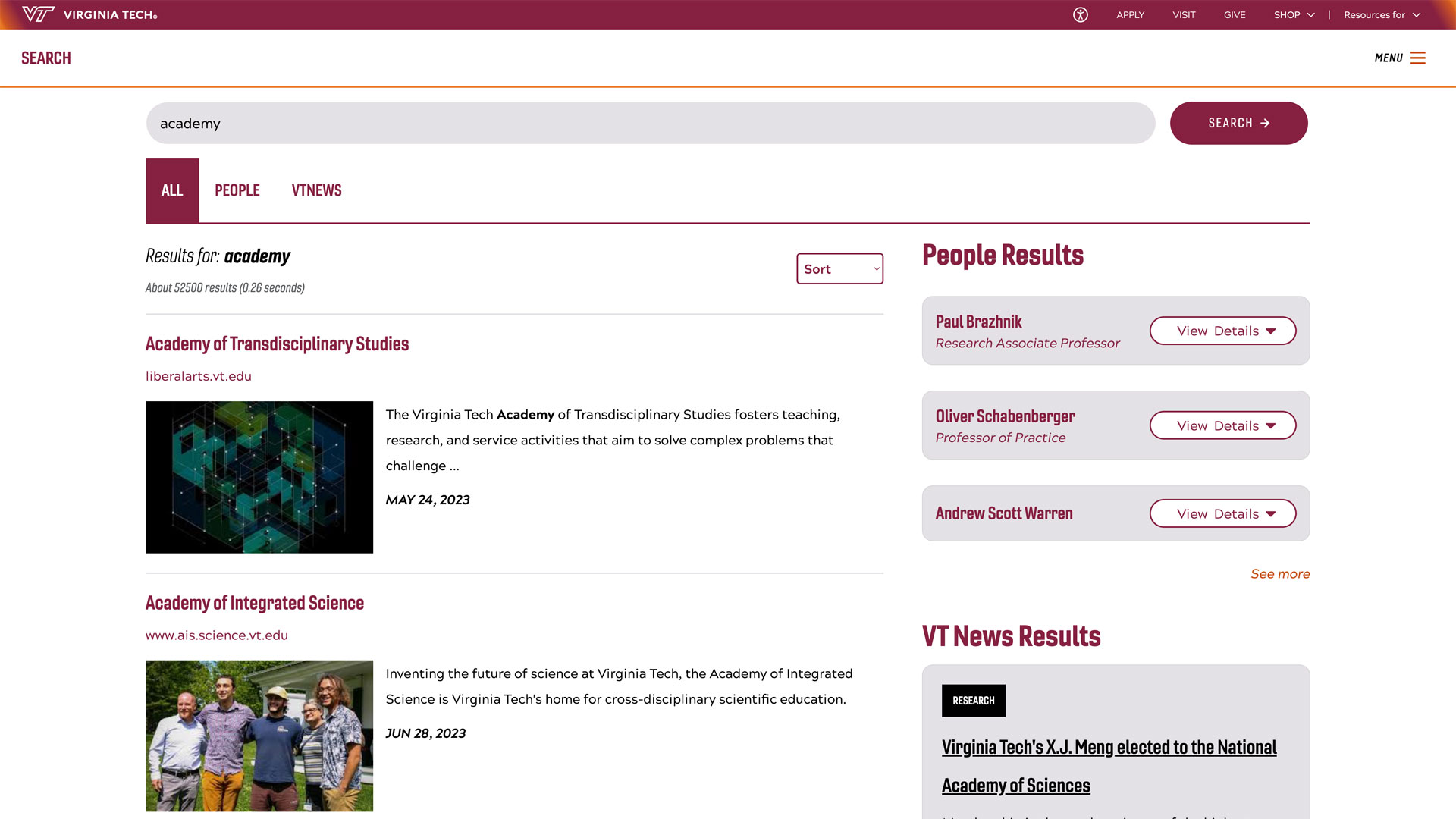President Sands highlights Virginia Tech’s growth, future in 2025 State of the University address

A look at Virginia Tech’s past decade, an analysis of the present, and a vision for the future served as the structure for President Tim Sands’ annual State of the University address held Wednesday afternoon at the Moss Arts Center.
Sands highlighted the university’s growing impact across the commonwealth. Specifically, he mentioned the recent opening of Innovation Campus Academic Building One in Alexandria, which he said positions Virginia Tech as a national nexus of emerging technology education and research in the greater Washington, D.C., metro area. The grand opening celebration is scheduled for Feb. 28.
The president said he wants to continue placing emphasis on growing Virginia Tech’s innovation network, which extends beyond Blacksburg and beyond the Washington, D.C., area. Examples of the university’s current outreach include Virginia Cooperative Extension offices in every county of hte commonwealth; the graduate education and research network in the D.C. area; the global presence in Europe, Africa, and India; and the health science and technology hub in Roanoke.
Sands referenced a fireside chat he hosted last fall with Northeastern University President Joseph Aoun. The discussion focused on developing innovation networks.
“As we grow, we will be challenged to form an innovation network that transcends the borders of our campuses and engages partners where they live and work,” Sands said. “This is not new for us, in fact, Virginia Tech has been doing it for more than a century. … It is our institutional DNA to take on challenges, work collaboratively, learn by experience, and seek solutions that make an impact. That is why the words Ut Prosim resonate so strongly and have become part of our identity as Hokies.”
Both Lance Collins, vice president and executive director of the Innovation Campus, and Julie Ross, the Paul and Dorothea Torgersen Dean of Engineering, joined Sands during the address. Both served on the Northern Virginia Steering Committee, which was tasked with developing a cohesive vision and organizational plan for Virginia Tech in the D.C. metro area.
Academic Building One, and the faculty, staff and students doing the research inside it, will play instrumental roles in the university’s innovation technology growth going forward.
“This is an incredibly exciting moment, in my opinion, in the history of Virginia Tech,” Collins said. “For the first time, all the components that we’ve been building – the faculty, the staff, the administration, and students – are coming together and unleashing the true potential of the Innovation Campus. We will serve as the nexus of academia, industry, and government in technology areas.”
Ross added, “All these separate sorts of initiatives, pieces and parts of things that we have built, are really exciting in and of themselves. But as we started to think about what all the interfaces look like and the interconnectedness between them, the committee was really excited about that, particularly as we think about the innovation of the future. We feel there’s so much potential, and that it will lead us to completely new places as an institution. So we’re really excited about that.”
Sands said the university will continue to focus on its current two top priorities – Virginia Tech Advantage and Virginia Tech Global Distinction. Both are part of Beyond Boundaries, a strategic vision put together by Sands, senior leadership, students, and stakeholders in the New River Valley that positions Virginia Tech for 2050.
In October 2023, the university launched Virginia Tech Advantage, a multi-year $500 million fundraising initiative that serves as the university’s commitment to increase scholarship dollars for in-state students, provide basic support for unmet needs, help with career preparation, and be used to offer transformational learning experiences.
Virginia Tech Global Distinction focuses on supporting impactful research and scholarship activities; building on faculty strengths and considering future needs; and attracting, enabling, and championing talent and partners. Sands and other university leaders aspire to see the university ranked among the top 100 global universities in the Times Higher Education World University Rankings. Times Higher Education is a publication that focuses on higher education issues.
“This year is not the same without the wonderful presence of Nikki Giovanni,” Sands said. “Though she retired from Virginia Tech in 2022, her spirit was still very much a part of our campus, just as we became a part of her.”
Sands also pointed out that Virginia Tech applications for admission for upcoming fall are approaching 58,000; the university’s endowment has surpassed $1.9 billion in market value – more than twice the value it was 10 years ago – and Boundless Impact: The Campaign for Virginia Tech continues to be on track toward its $1.872 billion goal.
In addition, extramural research expenditures reached nearly $450 million in fiscal year 2024 – a 40 percent increase over the past three years – and S&P Global upgraded Virginia Tech’s long-term bond rating from AA to AA+, the university’s highest rating ever.

“Ten years ago, Virginia Tech’s ability to meet our growing responsibilities as a modern land-grant university faced significant challenges,” Sands said. “Through our growing interdisciplinary institutes, research centers, and sites of innovation, Virginia Tech is positioned at the forefront of academic and technological advancement. The university’s investments in infrastructure also underscore our commitment to a campus environment that supports bold ideas and advances Virginia Tech’s distinct sense of place and service.
“We’ve risen to the challenges of this last decade – and we also know that the decades ahead of us will be different.”
A year ago, Sands announced an initiative that involved partnering with leaders from Blacksburg, Christiansburg, Montgomery County, and the New River Valley Regional Commission to collaborate on shared challenges and opportunities and explore ways to work together. The group, known as Partnership for Progress, launched a website and conducted a survey that has received more than 800 responses.
In addition, the partnership received an international award from the United Kingdom Town and Gown Association this past November.
“We were recognized for incorporating student and community voices, harnessing collective strengths, and working toward a visionary and actionable roadmap for the future of the region,” Sands said.
Sands also encouraged all Hokies to join a pilot program launched last year called Perspectives, a program developed by the Constructive Dialogue Institute to help people communicate effectively across differences. Currently more than 900 Virginia Tech students and 100 faculty and staff members are enrolled. This fall, the university will require all incoming students to participate in the program.
In closing, Sands thanked the entire Virginia Tech community for its work over the past decade, saying that the Hokies have truly traveled “beyond boundaries.”
“And we’re just getting started,” he said.




